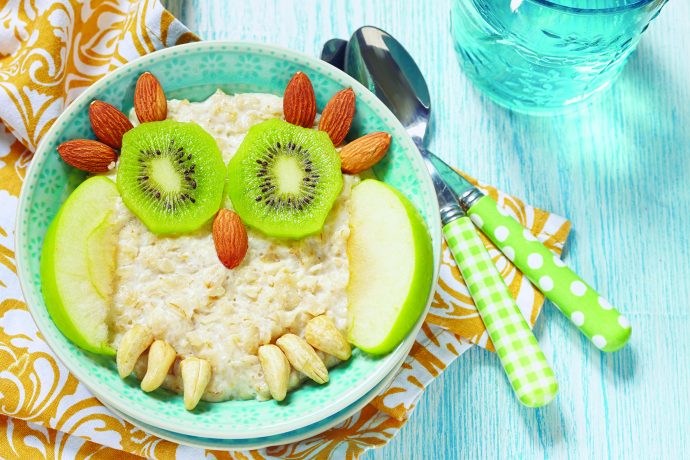Getting little picky eaters to eat or finish their meals is a common challenge for many parents. However, knowing the root cause of food rejection and adjusting the food preparation process may help.
Picky eating is a common occurrence in childhood but there is no single widely accepted definition. Although there are inconsistencies in defining picky eating, it has always been related to family stress and conflict during mealtimes. Many parents report their child as a picky eater, but very few of these children meet the diagnostic criteria for disordered eating.
However, picky eaters tend to have poor dietary variety and inadequacy in certain nutrients which may affect their growth and development. In this article, we will look at why children refuse to eat certain foods, thus limiting their diet to a narrow or inadequate variety of food.
It is important for parents to understand the real reason behind why your child is saying “no” during mealtimes. Even more so if his eating habits are causing unintentional weight loss, if he is underweight, has poor weight gain as he grows, or if he is eating less than usual. On the flip side, some picky eaters prefer processed foods and high-calorie foods/snacks, which may increase their risk of becoming overweight or obese.
Enticing the senses
Children have a sensitive palate, making them picky with food and can be challenging to deal with. Start by identifying the reasons behind your child’s pickiness towards the food and counter it by serving food that will appeal to his sense of sight, smell, taste and texture. Here are some common reasons why children are picky eating and how to address this issue.
Texture is too hard or fibrous
- Your child may find it too hard to chew or get tired from chewing. Try different cooking methods (e.g. steaming, stewing, etc.) to “soften” these types of food.
- Size also does matter, so chop or dice ingredients to make them easier to cook and eat.
Texture is too soft
- Some food is on the soft side when cooked, but your child dislikes the mushy feeling in the mouth.
- Use fast cooking methods such as stir-frying. Or cook those ingredients separately to avoid overcooking and add them in just before serving.
Dislikes the taste
- Many vegetables have a bitter taste. So chop them finely and use as ingredients to a bigger dish. This makes it harder to pick them out.
- Start off with small amounts and add to popiah, meatballs, begedil, omelette, chicken-lettuce wraps, or dumpling stuffing.
Dislikes the smell
- Smells can help attract your child’s interest in certain dishes. Pay attention to the freshness of ingredients, especially in meats and seafood. Some vegetables or herbs naturally have a strong smell.
- Try using spices or herbs based on your child’s preferences. They can also mask smells of certain ingredients (e.g. steaming fish with ginger helps reduce some of the ‘fishy’ odour).
Looks unappetising
- Lack of visual appeal is a potential factor. One solution is to make the food appear more appealing, enjoyable and fun to eat.
- This can be done by cutting ingredients into shapes (try using cookie cutters, food moulds, cute food picks) and being creative with food arrangement. The Internet has plenty of ideas for this!
Don’t give up!
Learn your child’s food preferences to better cater to his tastes when preparing meals for him. This will help minimise food wastage and maximise your attempts to feed him. You will need a little persistence when attempting to introduce new and unfamiliar foods as it can take up to 20 attempts before he accepts them. Remember not to force him to eat as it could cause him to end up “hating” both you and the food! Always be positive when offering food by demonstrating how much you enjoy that food when you are asking him to eat it.
Prolonged episodes of picky eating can affect your child’s growth and development in the long run as his diet may lack important nutrients (especially if only a few food types are accepted). Thus, it is vital to choose food wisely. Prioritise a nutrient-dense diet over a calorie-dense one, i.e. avoid sugary or oily foods as they tend to be high in energy but provide less nutrients. Your paediatrician may also recommend high-calorie, nutrient-dense oral nutritional supplements to support nutritional intake in picky eaters experiencing poor growth.
Be realistic in your expectations of your child’s portion sizes. You may refer to the Malaysian Food Pyramid or Malaysian Healthy Plate concept (referred to as suku-suku-separuh or quarter-quarter-half) as a guide to feed your child.
Feeding your child is important, but don’t stress out if your efforts seem to be in vain. Take a short break and try to feed him again. Just make healthy food choices available. You may involve your child in the meal preparation process and get creative. Enjoy the moment with your child and wonders may happen if you keep trying!
An educational collaboration with Nutrition Society of Malaysia.







Comments